As the nation tried to process the horror of the natural disaster, pictures emerged of rubble-filled landscape and deserted village streets piled high with furniture and personal belongings.
These are just some scenes from the areas in western Germany that were hit particularly hard by flooding on Thursday night. So far, police have confirmed that 163 people have died. pic.twitter.com/ljgDDXS8q2
— Luisa Rollenhagen (@lulurollenhagen) July 19, 2021
The district of Ahrweiler, in the northern part of Rhineland-Palatinate, was one of the areas to be worst hit by floods. Houses were destroyed and tens of thousands of people were left without electricity or running water.
On Sunday, the streets of the villages and towns in the district were still waterlogged, while in Bad Neuenahr, the historic Kurshaus, which was built in 1905, was devastated by the floods.
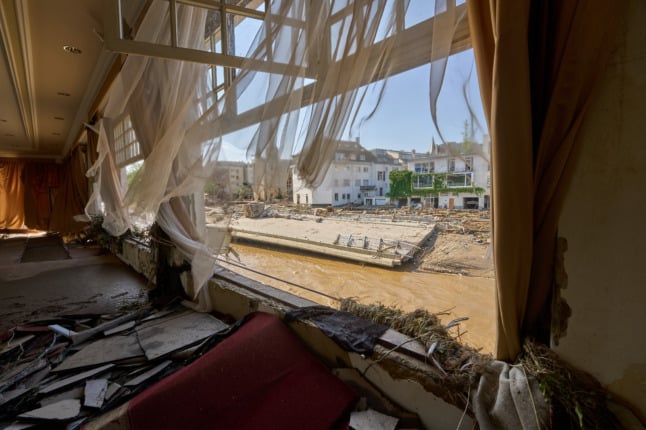
Photo: picture alliance/dpa | Thomas Frey
Pictures emerged of the hallways of the Kurhaus covered with mud, water and grime on Sunday afternoon, while entryways were blocked by piles of shattered furniture.
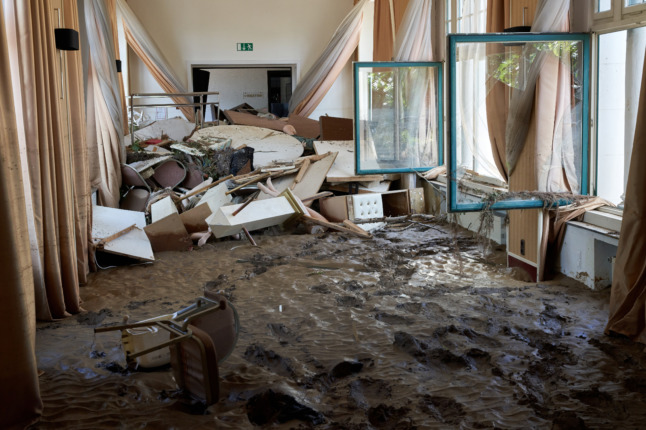
Photo: picture alliance/dpa | Thomas Frey
Germany floods: Residents are coming to terms with the extent of damage in their towns. #Hochwasser pic.twitter.com/Eo6okEgvBk
— Benjamin Alvarez (@BenjAlvarez1) July 19, 2021
Broken furniture, electrical equipment and rusty bicycles were cleared to the side of the road to make space for emergency aid vehicles.
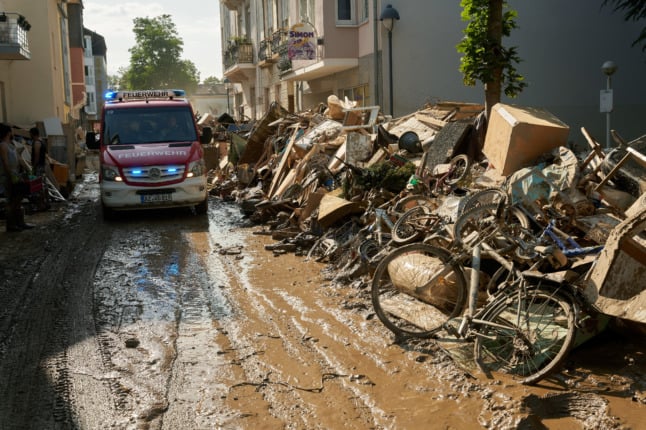
Photo: picture alliance/dpa | Thomas Frey
In nearby Sinzig, 12 people lost their lives at a care home for the disabled (the Lebenshilfe-Haus) during the floods.
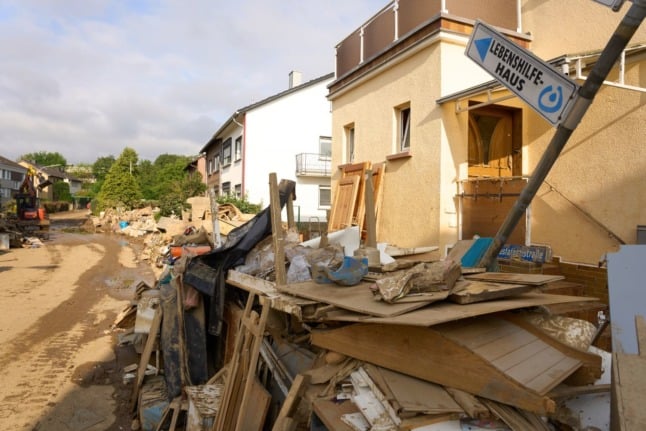
Photo: picture alliance/dpa | Thomas Frey
A big cleanup operation is underway in the areas affected by the floods. All these tractors and trucks belong to volunteers, people from all over the region who came here to help. They say authorities haven’t shown up and are not coordinating the operation #Hochwasserkatastrophe pic.twitter.com/LColTdJTrO
— Giulia Saudelli (@giuliasaudelli) July 17, 2021
Sinzig’s Barbarossa School was uninhabitable on Monday, as furniture lay in tatters on the floor.
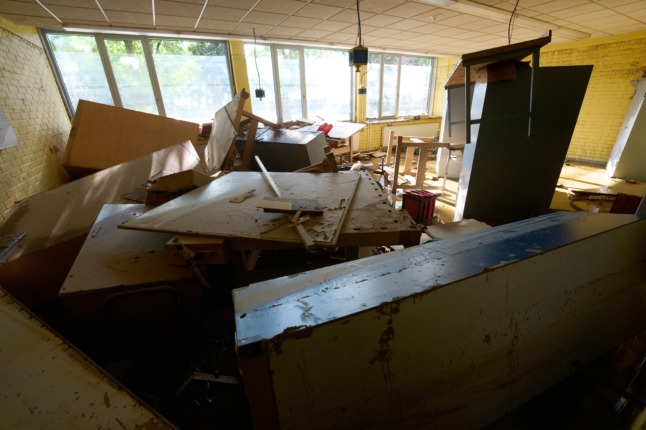
Photo: picture alliance/dpa | Thomas Frey
Livelihoods covered in sludge in the town of Bad Neuenahr-Ahrweiler, one of the worst hit areas in Germany. #Hochwasser pic.twitter.com/zGXDH9OTE2
— Benjamin Alvarez (@BenjAlvarez1) July 19, 2021
In the historic industrial town of Stolberg, North-Rhine Westphalia, the town archives were completely flooded.
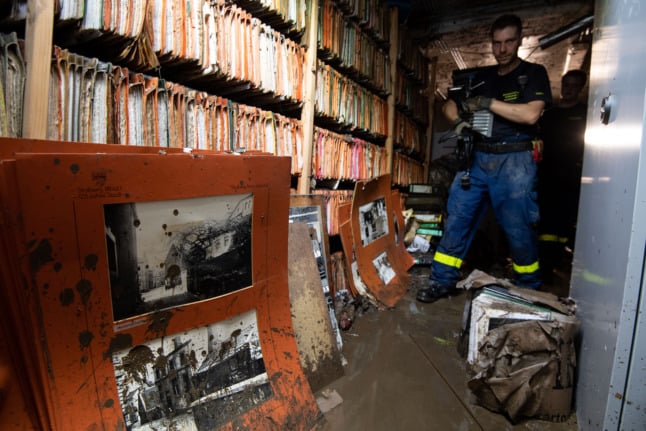
Photo: picture alliance/dpa | Marius Becker
Chancellor Angela Merkel has arrived in Schuld. She is speaking to Rhineland Palatinate state premier Malu Dreyer. #Flutkatastrophe pic.twitter.com/0Cf5eOsv2D
— Giulia Saudelli (@giuliasaudelli) July 18, 2021
In Altenahr, just to the west of Bad Neuenahr, smashed-up camper vans, cars and mobile homes were pictured lying on top of each other. In the worst-hit flooded areas, the force of the tide had swept up numerous vehicles and crushed them against bridges and buildings in seconds.
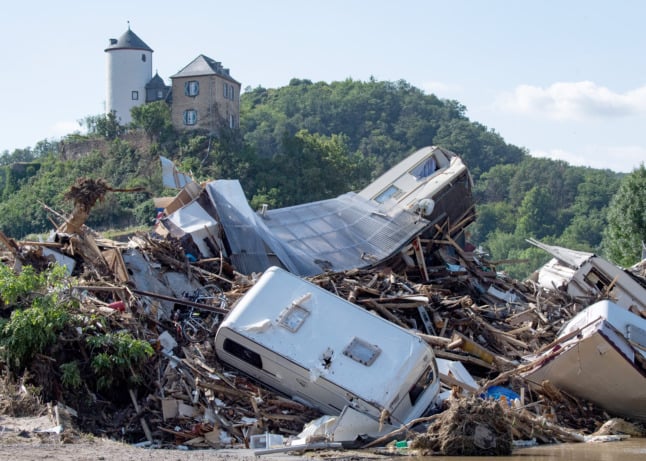
Photo: picture alliance/dpa | Boris Roessler
Chancellor Merkel visited the village of Schuld in Rhineland-Palatinate on Sunday and was pictured holding the hand of state premier Malu Dreyer (SPD), who lives with MS, as they walked through the wreckage.
READ ALSO: Germany’s Merkel sees ‘surreal’ wreckage as Europe flood death toll tops 180
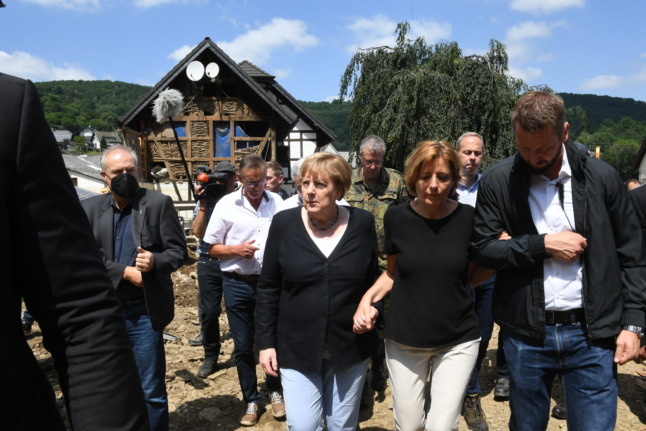
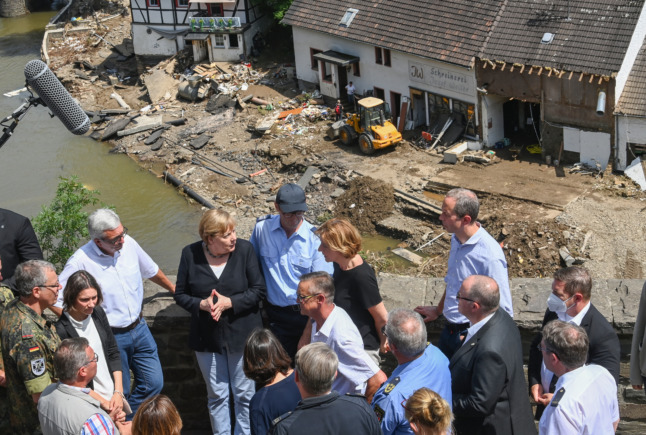
Photo: picture alliance/dpa/POOL AFP | Christof Stache
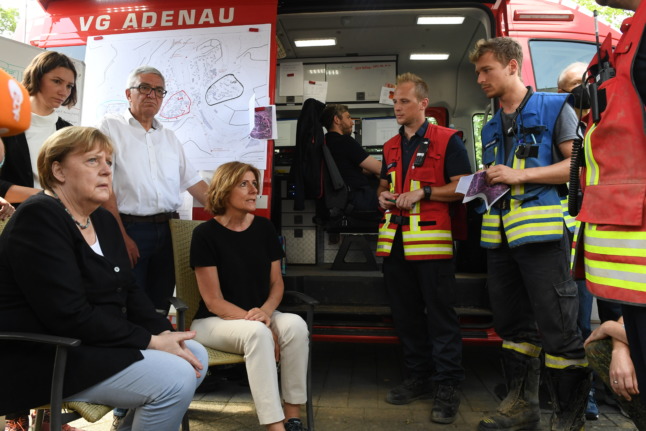
Photo: picture alliance/dpa/POOL AFP | Christof Stache

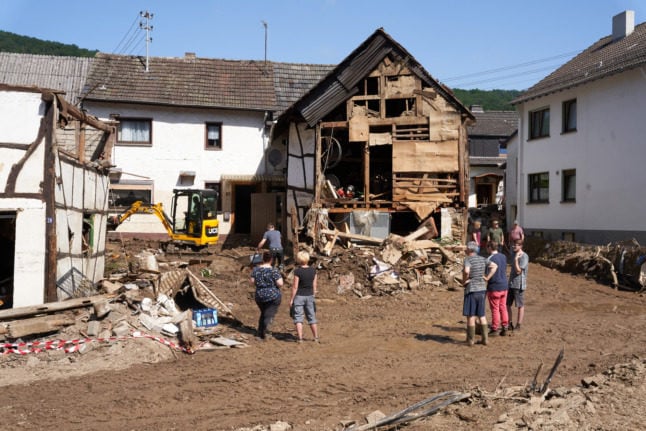

 Please whitelist us to continue reading.
Please whitelist us to continue reading.
Member comments